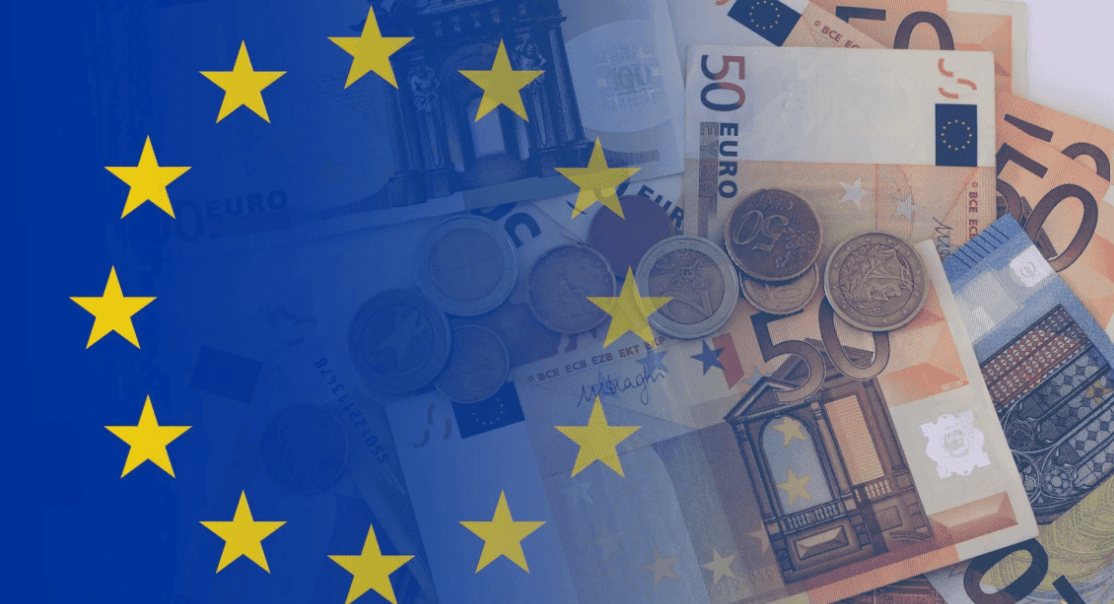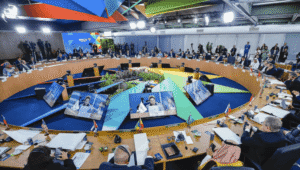Business services like advertising, legal support and market research are key inputs for all manufacturing companies in an international business environment, since they are essential for accessing markets abroad. This column argues that exporters with the option to outsource such services to external providers – as opposed to employing workers directly – can reduce the costs of exporting. As a result, trade liberalisation can lead to considerably more foreign entry, higher variety gains from trade and larger producer surplus for smaller manufacturers.
Professional and business services are essential inputs for most companies and they matter for the aggregate economy. They have the highest forward linkage of all industries and employ a large share of workers in most advanced countries. For example, in France, about 14% of the gross value of exports can be traced to professional and business services, an industry that employs 16.3% of the labour force and accounts for roughly half of the entire service sector growth since 1975.
As a consequence, excessive regulation or lack of competition in upstream service industries may have a large impact on downstream manufacturing firms and their export performance (Arnold et al. 2011, Barone and Cingano 2011, Correa‐López and Doménech 2019).
A good example for how the provision of professional and business services matters for the international activities of manufacturers is Ducati, the Italian motorcycle producer. The firm expanded rapidly to several new destination countries in the early 2000s and, to export its bikes, manuals and technical documentation had to be translated into various languages and continuously kept aligned with the respective local regulations. This required substantial coordination between engineers and service workers as well as constant monitoring by Ducati’s management. Clearly, such a business service (documentation) constitutes costs of market access.
Initially, the service was provided by Ducati’s own employees. But as foreign operations expanded and more and more export countries were added, management became overwhelmed with coordinating and monitoring all those service workers.
Ducati’s solution was to outsource the entire documentation business to Xerox. A few years later, Xerox ran an advertising campaign stating that: “We focus on translating and delivering Ducati’s global publications. […] Which leaves Ducati free to focus on building amazing bikes” (Xerox 2010). Reorganising the provision of the service alleviated managerial strain and this lowered the costs of accessing foreign markets.
In a recent study (Berlingieri and Pisch 2024), we investigate such outsourcing decisions versus employment decisions for market access services and its implications:
- As firms access more markets, they increasingly rely on external service providers.
- The costs of managing employees who work on market access-related tasks rise with the number of export destinations, so that outsourcing becomes attractive – even if services become less adapted to the firm.
- When firms have the option to outsource market access services, the reduction in trade costs typically leads to a doubling of variety gains for consumers and increased profits for smaller exporters, compared with a situation when firms have to produce inputs internally.
Firms increasingly outsource market access service when they export to more destinations
To start, we show that Ducati’s experience is by no means unusual. We use confidential micro-data to document that firms generally rely more on outsourcing of professional and business services as they enter new markets abroad.
For the period 1996 to 2007, we compute the ratio of outsourced expenditure on market access services, like advertising and market research, to a company’s total costs at the firm level. Firms spend a sizeable 5% of their costs on selected outsourced business services, comparable to the outsourcing of intermediate inputs.
We then relate these external expenditures to the number of export destinations from detailed customs data. Figure 1 illustrates that the relationship is strongly upward sloping.
Figure 1 Cost share of outsourced market access service expenditure by number of export destinations


To show that the connection between a firm’s extensive country margin of trade and outsourcing is causal, we leverage a natural experiment. After the end of communism in the late 1980s, East European countries successively removed entry barriers for foreign firms, so that consumers could enjoy products from an increasing number of origins. We use the number of such country-product pairs as a measure for the ‘variety’ demand shock created by East European integration over time.
We compare ‘treated’ French firms – those that in the first year of our sample produce goods with high market access demand shocks – to ‘control’ firms – those that did not. Indeed, we find that companies that were exogenously enticed to add markets to their portfolios were much more likely to outsource more.
Due to a unique cross-sectional survey in France, we can zoom in even further and study very detailed services. In particular, we can observe whether each one of more than 30 individual service inputs is outsourced by a manufacturer or not, and whether firms with more export destinations in their portfolios are more likely to do so.
We find that advertising, translation, insurance and legal services are typical activities that manufacturers outsource with an ever higher probability as they export to more foreign markets (Figure 2). Clearly, these are ‘market access services’. By contrast, outsourcing of data processing, cleaning, machinery maintenance or warehousing are either altogether unrelated to international activities or respond to how much is sold abroad (the intensive margin of exporting).
Figure 2 Outsourcing responses to market access by service type


Manufacturers trade-off managerial overload against ex-post adaptation costs
Why would a manufacturer like Ducati produce market access services in-house in the first place? What trade-offs do they face?
In our paper, we argue that the answer lies in how well a service fits a manufacturer’s needs. In the case of Ducati, legal advice concerning the regulations in a destination market must cover the correct spectrum of products to be shipped, i.e. motorcycles with a certain engine displacement and the respective spare parts.
Since external service providers often work with standardised portfolios, managers are forced to ask for costly ex-post adaptations under outsourcing. These can be avoided with communication and monitoring inside the manufacturing company, but at the expense of managerial time and energy. Firms therefore face a trade-off between managerial strain under integration and a greater need for adaptation under outsourcing.
We provide empirical evidence for this trade-off. When a service input requires high adaptation costs, or when a company has high managerial capability, the model predicts a tendency towards in-house production.
Based on matched employer-employee and O*NET data, we measure the scope for adaptation inter alia as the share of non-routine tasks typically employed to render each service. While warehousing is a relatively well-defined service with a large fraction of routine work, advertising is creative and usually relies on highly non-routine activities. Similarly, a firm’s managerial capability can be proxied by the share of coordination and monitoring-intensive tasks performed in a company. In both cases, we find resounding empirical support for the predictions of the model.
The option to outsource market access services amplifies profits of smaller exporters and at least doubles variety gains
Did Ducati significantly reduce their market access costs by outsourcing? More generally, is this organisational margin important in the aggregate and what are the implications for the welfare effects of trade liberalisations?
We use the formal model of the service make-or-buy decision to derive an ‘organisation-augmented’ market access cost function. It has striking properties: market access costs are firm-specific, non-linear in the number of destinations, and depend on the entire export portfolio of a company. We embed this function into an otherwise standard trade model with heterogeneous firms (as in Melitz 2003, Chaney 2008) and calibrate all parameters to match the most important patterns in our firm-level data.
In the main counterfactual exercise, we study the effects of a 25% reduction in trade costs. We compare the outcomes of firms when they have the option to outsource to a scenario where they can only employ service workers directly. We find substantial benefits of an optimal reorganisation:
- First, smaller exporters increase their profits significantly when they can reorganise. The difference in producer surplus of firms below the median of the productivity distribution is 8% bigger with the option to outsource. Large companies, however, gain little, as they already serve the most profitable markets.
- Second, the trade liberalisation leads to more entry into foreign markets even under full integration, but these variety gains for consumers are at least doubled when firms can outsource market access services.
Implications
The availability of business services providers is an important determinant of how firms respond to a change in trade costs. If outsourcing is difficult, manufacturers suffer severely from managerial overload and exporting to (additional) destinations after a trade liberalisation is costly. Reorganising the provision of market access services therefore acts as an amplifier for the gains from trade.
There are several implications of these findings:
- Market access costs have an important firm-specific component, are ‘history dependent’, and may exhibit complementarities across countries (Morales et al. 2019, Alfaro-Urena et al. 2023).
- Globalisation contributes to structural change – from the secondary to the tertiary sector – due to increased specialisation of companies (Fort et al. 2018, Ding et al.,2022)
- Globalisation affects within-country inequality through outsourcing events (Goldschmidt and Schmieder 2017, Song et al. 2019, Bilal and Lhuillier 2021).
- Export promotion policies should also target upstream service sectors (Makioka 2019).
Source : VOXeu



































































